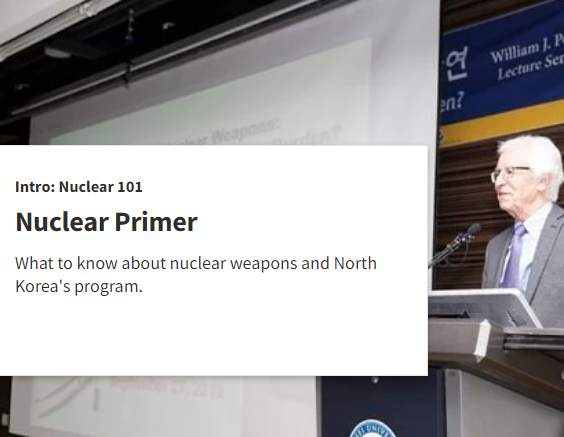Hinge Points: An Inside Look at North Korea’s Nuclear Program
- Arsenal Estimation
- Bomb Fuel
- Weaponization
- Delivery Systems
- Nuclear Estimates
- Further Reading
Estimating North Korea’s Nuclear Arsenal
We know that North Korea can build the bomb because the tremors from deep inside its Punggye-ri nuclear test site tunnels have been detected around the world six times. The most recent blast in September 2017 was more than 10 times the size of the 1945 Hiroshima and Nagasaki nuclear explosions. With these explosions, North Korea joined seven other countries known to have detonated nuclear devices. However, large uncertainties still exist in North Korea’s nuclear and missile programs.[1]
We also know that North Korea can launch missiles at ranges from a few hundred kilometers to intercontinental range. We know that it launched two satellites into Earth’s orbit, one in December 2012 and one in February 2016, but do not know if they are functioning. We know that Pyongyang has not used its missiles in armed conflicts involving North Korea.
The three requisites for a nuclear arsenal are shown in Figure 1. First, the production of the nuclear bomb fuel – plutonium or highly enriched uranium (HEU) – and for hydrogen bombs, heavy hydrogen – namely the deuterium and tritium isotopes. Second, weaponization – that is, the design, building, and testing of nuclear weapons. Third, delivery systems and the integration of nuclear devices into the means of delivery. For North Korea, the inventory of bomb fuel determines the size of the arsenal. Weaponization determines its sophistication. The delivery systems integrated with the first two determine the threat the arsenal poses. All three are crucial but require very different technical capabilities and industrial bases.
| Fissile Material | Weaponization | Delivery Systems |
|---|---|---|
| Governs size of arsenal | Governs sophistication of arsenal | Governs threat arsenal poses |
|
|
|
Sources:
[1] Siegfried S. Hecker, “Nuclear North Korea: A Path Forward in View of Facts, Myths and Uncertainties.” In Understanding Kim Jong-un’s North Korea: Regime Dynamics, Negotiation, and Engagement, ed. Robert Carlin and Chung-in Moon, 2022.
[2] Hecker, Siegfried S., Matthias Englert, and Michael C. Miller, Materials Research Society, Chapter 14: “Nuclear Nonproliferation,” in textbook Fundamentals of Materials for Energy and Environmental Sustainability, Eds. David S. Ginley and David Cahen. Cambridge UP: 2012.
[3] Center for Strategic and International Studies, 2021. https://missilethreat.csis.org/country/dprk/; The CNS North Korea Missile Test Data Base https://www.nti.org/analysis/articles/cns-north-korea-missile-test-data.
[4] Hecker, Siegfried S., Chaim Braun, and Chris Lawrence, “North Korea’s Stockpiles of Fissile Material,” Korea Observer Vol. 47, No. 4, Winter 2016.
[5] Hecker, Siegfried S., Robert L. Carlin, and Elliot A. Serbin, “A Comprehensive History of North Korea’s Nuclear Program: 2018 Update,” The Center for International Security and Cooperation, Stanford University, February 11, 2019. https://cisac.fsi.stanford.edu/content/dprk-history-2018-update
[6] Hecker, Siegfried S. with Elliot A. Serbin, Hinge Points: An Inside Look at North Korea’s Nuclear Program, Stanford University Press, January 2023.

